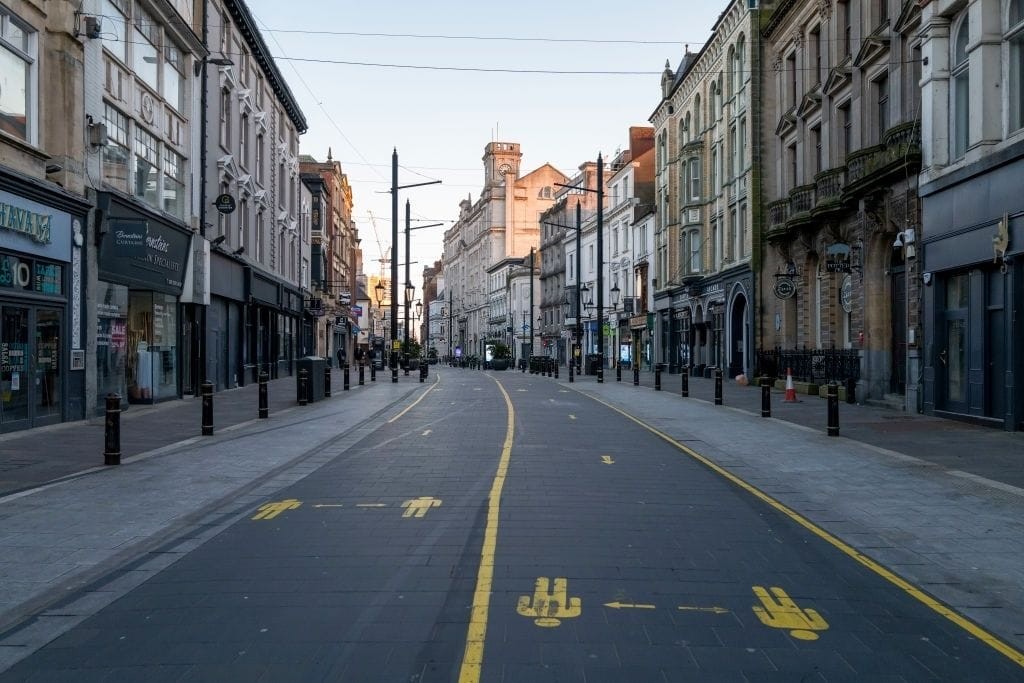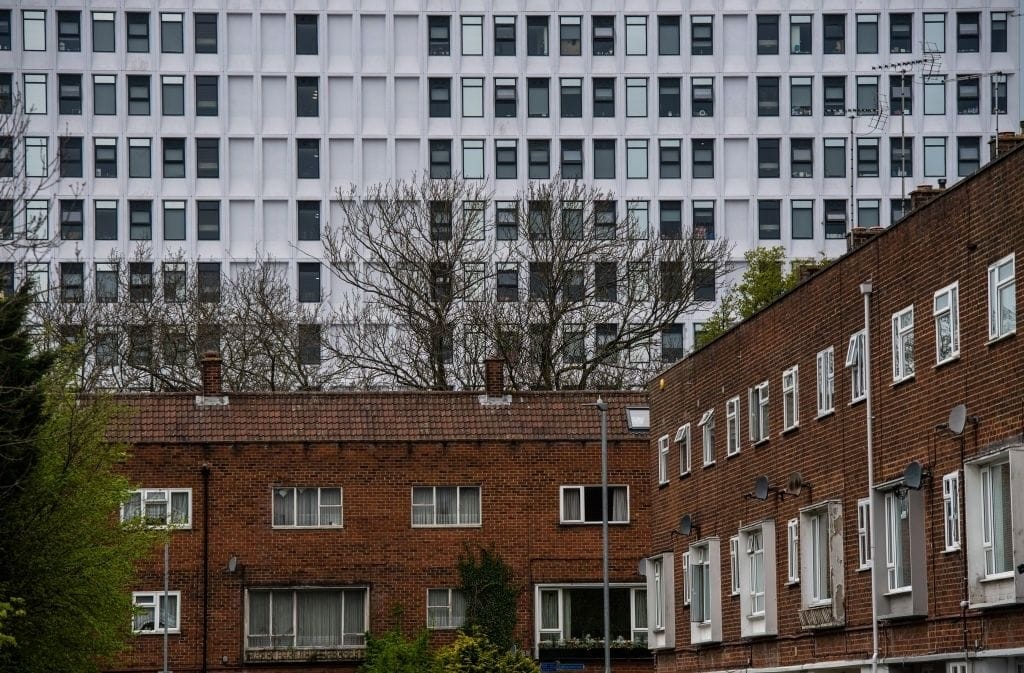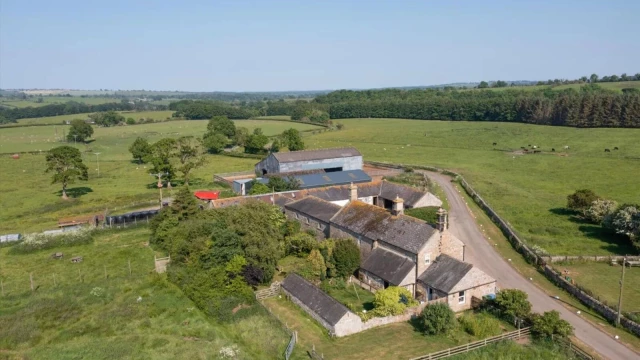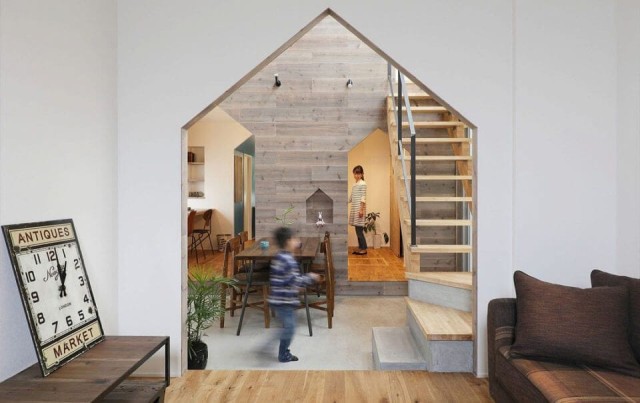Read next
The latest news, updates and expert views for ambitious, high-achieving and purpose-driven homeowners and property entrepreneurs.


In spring 2021, Secretary of State of Housing, Communities and Local Government Robert Jenrick unveiled new measures that are designed to revitalise England’s “cherished high streets and town centres”.
The details of these new freedoms included a range of measures to encourage the expansion of building projects, but it is the change to planning regulations that allow developers to turn shops into homes that will have the most impact.
The aim is to help businesses and towns recover from the fallout of the pandemic and to help solve the UK housing crisis in one quick-fix hit. The key idea is to make it easier for big developers to turn retail space into residential properties, by removing the need for planning permission. The government said that these freedoms would revitalise the UK high street and make a contribution to easing the UK housing crisis.
However, these changes caused deep concern and anger amongst retailers and building industry professionals alike.
According to the report on the independent MHCLG funded research into quality standard of homes delivered through certain permitted development rights for the change of use, people are worried that the deregulation of building standards will have a potentially catastrophic impact on UK town centres and high streets as well as the future residents of housing created without proper scrutiny from local councils.
Far from revitalising an area, most experts agree that the rules could potentially destroy town centres, deliver many poor quality homes and are likely to create the slums of the future.

It all hinges on the new permitted development rights (PDR) and these work in a number of ways.
There were already permitted development rights for converting shops into homes and converting offices into homes.
But the rules for shops were designed to leave councils with control of where these changes could happen – they could reject a conversion if it was proposed in a “key shopping area” or would affect local shopping provision.
Fact: only a maximum 150 square metres could be switched from shop to housing. And the permitted development right couldn’t be used at all in conservation areas.
Under the new Class MA covering a wide range of buildings from shops to banks to offices to gyms, the “key shopping area” provision has been swept away. The maximum area has gone up 10 times to 1,500 sqm (potentially 40 studio flats!). And you can now use this right in conservation areas (with some restrictions).
In addition, since autumn 2020, you no longer need planning permission to demolish or rebuild vacant properties such as shops or industrial units if they are to be used for housing.
*An important note here, as of 5th of March 2024, further changes have removed this 1,500 sqm limit, as well as the three month vacancy conditions. The prior approval process will still apply to assess certain key matters. We've included a more extensive explainer of these changes at the end of this article.

This new deregulation is likely to result in property developers’ free-for-all, but this is exactly what the government wants.
Jenrick has already said that he wants to “support the hundreds of jobs that depend on housing and construction” so he will probably achieve it with this new move towards greater freedom. However, this is not such good news for the rest of us.
Removing constraints from the planning process and putting future development solely into the hands of property developers is not going to lead to better housing or a better local high street or shopping centre.

Building professionals, the construction industry, retailers, local planning authorities and the homeless charities are just some of the organisations that have voiced concerns about the new PDRs.
27 organisations including the directors of the Association of Town and City Management, the British Independent Retailers Association and the National Federation of Independent Retailers urged the government to rethink the policy in an open letter, saying that:
“Blanket permitted development rights (PDR) for E use class to residential would damage these objectives for relatively minimal returns on additional housing stock,”
According to retail organisations, placing ground floor housing on the high street, “does not draw footfall, does not support new businesses, reduces the potential for business growth and will undermine the viability of existing retail, cultural and commercial activities”. The danger is that if a town centre becomes denuded by too many retail-to-residential conversions, this will create a vicious circle that reduces the viability of the remaining commercial outlets which in turn threatens their existence and incentivises their conversion to residential.

You might imagine that architects and property professionals are now rubbing their hands together at the prospect of all this new business.
And of course, some developers will be doing just that because this new building deregulation looks like an easy way to capitalise on the retail to residential conversion boom that is likely to be kicking off in most towns anytime soon.
The truth is that the property industry has voiced concerns. The British Property Federation (BPF) has launched an appeal to the Government talking about “the damaging impact” the plans will play in the future of the country’s high streets, warning that the “uncontrolled conversion” of vacant shops to residential will not save our high streets and will damage town centres”.
The Royal British Institute of Architects has also been vocal in its condemnation of the new permitted development rights (PDR) saying that the removal of restrictions is likely to lead to the construction of tiny substandard homes.

Although Jenrick’s new rulings on permitted development rights (PDR) are supposed to sort out the housing shortage, the housing crisis was not actually caused by red tape on planning applications. However, this is fairly typical government policy. They have decided upon a so-called quick-fix solution and have endeavoured to remove necessary safeguards in the name of freedom.
The Royal Institute of British Architects has slammed the government’s new policy. President of RIBA Alan Jones said:
"There is no evidence that the planning system is to blame for the shortage of housing, and plenty to suggest that leaving local communities powerless in the face of developers seeking short-term returns will lead to poor results."

Although the idea of converting unused shops, industrial units and office buildings into residential use does seem like a reasonable idea because these are redundant buildings and we need more homes, it is not as easy as it sounds.
There has been a lot of retail and office to residential conversion already and results are usually of a very low standard.
One of the worst examples of this is Terminus House, a 1960s office block in Harlow that was converted to 241 flats described as cramped, crummy and a human warehouse.
Incredibly some office to resi conversions include flats that do not even have any windows.
Although the new permitted development rights (PDR) has stipulated some basic human requirements for new dwellings created from commercial properties, such as the need for windows and basic floor space, these do not go far enough.
As RIBA President Alan Jones points out:
"Even the government's own advisors concluded that permitted development had 'permissioned future slums' – allowing sub-standard homes to be built with little to no natural light and smaller than budget hotel rooms.

As far as we can see, all responsible bodies in the building and construction trade, welfare organisations surrounding housing and all high street retailers and their professional bodies are unanimous in their concerns about the new PD rights.
In addition, common sense tells us that if developers are allowed to build exactly how and where they want, the results are unlikely to be of benefit to the people who have to live in the cheaply and thoughtlessly created new homes.
From the concerns about the increasing decline of shopping centres and the UK high street to the knock-on effect to retailers trying to continue to trade in a predominantly residential area, it is impossible to see how the new permitted development rights (PDR) will revitalise anything.
And when it comes to raising the standards of affordable housing, it seems that permitted development rights (PDR) will only lead to a decline. It is remarkable that at this point in history a proviso that says that all new homes must have a window should be seen as a triumph for housing standards. Yet this is where we are in 2021.
The Royal Town Planning Institute has issued a dire warning, saying:
“While we recognise the need for greater flexibility, expanding PD rights in this way would not only tear at the fabric of local character, weaken the capacity to deliver locally agreed visions and further jeopardise the vibrancy of our high streets and town centres, it could also lead to a huge increase in poor quality homes for the poorest in our society.”
In fact, the only people who seem to be in favour of the new scheme are Robert Jenrick and the legions of future slum landlords and property developers who know that this deregulation will be a license to make money regardless of the impact on people's lives.
A couple of amendments to Class MA came into effect on 5th March 2024 and they’re not insignificant, so make sure you read the next few lines closely.
Firstly, the rule that said the property had to be vacant for three months before submitting your application has been scrapped. This means there is no minimum amount of time your building needs to have been vacant for before going ahead with your application, ultimately making the process a much faster one.
Secondly, the 1500 sqm size limit has now been removed, meaning you can convert as big an office building as you like.
So, why have these changes come into play and what do they mean?
Well, in the Explanatory Memorandum attached to the order, the Government explained the changes are being made to ‘further support housing supply’ and they produced some impressive statistics to highlight the key role they believe permitted development rights play in easing the housing crisis: in the eight years to March 2023, permitted development rights for the change of use have delivered 102,830 new homes to rent or to buy, plus in the last 12 months, these rights supplied 9,492 homes to England, equating to 4% of the overall housing supply that year.
When asking ourselves whether these changes are positive or negative, there are arguments for both sides, particularly when it comes to the size restriction being scrapped. Those on board with the change will celebrate the easing of the rules and embrace an increased supply of much-needed housing, while those against will argue that the change could reduce the standard of these types of homes, that the sense of community could be worsened due to a lack of communal space and that it will further damage already struggling high streets by reducing the number of commercial spaces.
Let’s see how it plays out over the coming months and years.

Nicole I. Guler BA(Hons), MSc, MRTPI is a chartered town planner and director who leads our planning team. She specialises in complex projects — from listed buildings to urban sites and Green Belt plots — and has a strong track record of success at planning appeals.
We look forward to learning how we can help you. Simply fill in the form below and someone on our team will respond to you at the earliest opportunity.
The latest news, updates and expert views for ambitious, high-achieving and purpose-driven homeowners and property entrepreneurs.
The latest news, updates and expert views for ambitious, high-achieving and purpose-driven homeowners and property entrepreneurs.










We specialise in crafting creative design and planning strategies to unlock the hidden potential of developments, secure planning permission and deliver imaginative projects on tricky sites
Write us a message